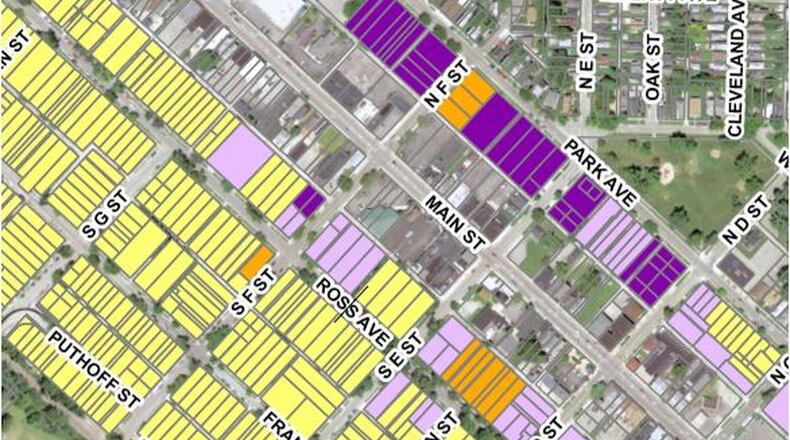But Hamilton’s proposed collection of “Traditional Neighborhood” zoning — four kinds of districts — puts a variety of zoning uses close to each other. That’s because in older neighborhoods like Rossville and Prospect Hill, which are centuries or many decades old, the buildings and their uses can be very different, even though they’re very close.
In such neighborhoods, said city Planning Director Liz Hayden, “You’d have a single-family house next to a duplex, next to a four-plex, next to a corner store, so the four different districts are very different in that way of big of a multi-family building is allowed, and then also, what commercial or retail uses are allowed.”
And yet, “For whatever reason, since the city got zoning back in 1926, that area has been zoned multi-family, even though most of that area is single-family,” Hayden said. “We’re trying to get it kind of in line with what’s actually on the ground.”
Hayden said the proposed zoning changes were spurred mainly by two things.
First, about three years ago, council members mentioned they were concerned that most urban-core neighborhoods were zoned to allow three-family residences or four-or-more residences, “and it didn’t really make any sense because that was not what was actually on the ground.”
Second, “We’re having more and more interest in people doing infill (construction of houses) or investing in their properties,” Hayden said. In one case, someone wanting to build a house to replace a demolished building would have had to have obtained two or three zoning variances to build a similar house to what had been there, she said.
Somebody who wants to build a detached garage or an addition to their homes — or build a new home within the existing neighborhood — “you would probably have to get quite a few variances, just to build what would be very appropriate in that neighborhood,” Hayden said.
So the proposed changes can make it easier for homeowners to invest in their properties. On the other hand, they also can help deter owners from splitting houses that originally were single-family into multiple apartments in cases where the properties and houses aren’t large enough for that, she said.
There are some city rules in place that Hayden calls a “Band-Aid approach” to prevent inappropriate subdividing of single-family houses.
“If there’s a house that was built to be a one-family, and it’s been divided into four family units, there’s a few things wrong with that situation,” she said. “Parking is a huge one. There’s been some interesting conversions of our neighborhood houses that probably aren’t ideal.”
But in some very large houses, it might be appropriate for them to be divided into apartments, because they are on large lots and the buildings are large enough, she said.
“I don’t think of it as trying to preserve the neighborhood exactly as it is, because we want to see investment, and in some ways we think the new zoning will help encourage that new investment, because the idea is there would be fewer trips to the Board of Zoning Appeals to do simple projects,” Hayden said.
Four new kinds of ‘Traditional Neighborhood’ districts
Here will be the four new kinds of Traditional Neighborhood districts, if Hamilton City Council approves them:
- TN-1 — mainly accommodates detached single-family homes at lower densities than other Traditional Neighborhood districts. It also allows low-density dwellings of up to two units.
- TN-2 — allows detached one-family homes at low-to-moderate densities, although it also allows low-density dwellings of up to four families.
- TN-3 — allows a variety of land uses, including single-family homes that are attached or detached at moderate density, and also up to six-family units. Other conditional uses in the areas include live-work units; bed and breakfasts; clinics; nursing homes; day cares; residential facilities; retail; office; restaurants and funeral homes.
- TN-4 — also allows several land uses, including single family-family dwellings that are attached or detached at moderate- or high densities. These districts also allow dwellings of up to eight-family units, a range of commercial uses, including many of those allowed in TN-3 districts.
About the Author
